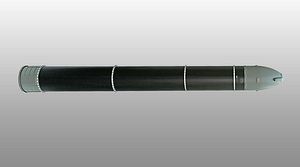Testing of Russia’s deadliest nuclear weapon currently under development, the new super-heavy thermonuclear-armed intercontinental ballistic missile (ICBM) RS-28 Sarmat, has been delayed, according to unnamed Russian defense industry source.
“[Silo launch] testing of the Sarmat from the Plesetsk launch facility in March won’t happen,” the source was quoted as saying by TASS news agency on March 23. “It has been shifted back to the second quarter of 2017, likely in April.”
The reason for the delay is the need for additional tests of hardware components in the missile’s test stands. Should the delay be confirmed by official channels, it would be the third time that the Sarmat’s ejection test–which tests the mechanism of a missile leaving its launch container—has to be postponed. (Originally, the first ejection test was to occur in 2015, but was pushed back to 2016 and now to 2017.)
Given that the Sarmat is Russia’s top ICBM development program and the missile expected to become the mainstay of the Russian Strategic Missile Force’s silo-based ICBM force, a delay in this high priority program would be significant and another sign that Russia is struggling to modernize its nuclear forces. The Sarmat is slated to enter service by 2020, replacing Soviet era RS-36M ICBMs.
“So far, we know of one single test of the new weapon system. In August 2016, the Sarmat’s first stage engine, named PDU-99, was tested. Analysts believe that the engine is a modified version of the RD-274 liquid rocket engine used on the RS-36M ICBMs. However, it is unclear whether the test was successful or not,” I reported in January 2017.
Additional circumstantial evidence that not all is well with the Sarmat program is the Russian defense minister’s request for weekly status reports, according to the Russian Nuclear Forces Project (RNFP):
He promised that the ministry of defense will demand weekly reports on the progress with development of ‘prospective strategic missile systems’ that are built at Krasmash [a Russian defense contractor building nuclear weapons for the Russian Strategic Missile Force].
In October 2016, the Makeyev Rocket Design Bureau posted a declassified picture of the prospective new missile on its website for the first time. In an earlier post, I summarized what makes Russia’s latest ICBM such as a deadly weapon:
The Sarmat can reportedly carry ten heavy or 15 (some sources say 16) lighter warheads. The new ICBM can allegedly also be fitted with a new hypersonic glide vehicle (HGV), the YU-71, currently in development under the secret Project 4202. The YU-71 is a warhead purportedly capable of penetrating any Western missile defense system.
Last year, Russian state media boasted that the missile was so powerful that it could wipe out the entire state of Texas or France.































